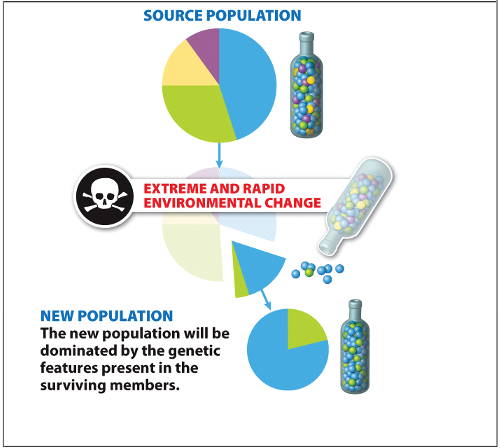Chapter 10 Self Quiz: Foundations of Genetics
- Interactive tutorials with "MendAliens":
- If the two alleles of a gene differ, the organism is ________, and the ________ allele determines the organism's ________.
- heterozygous, dominant, genotype (wrong)
- homozygous, dominant, phenotype (wrong)
- homozygous, recessive, phenotype (wrong)
- homozygous, dominant, phenotype (wrong)
- heterozygous, dominant, phenotype (correct)
Hint
-
 The offspring between a homozygous dominant and a homozygous recessive individual are
The offspring between a homozygous dominant and a homozygous recessive individual are
- 100% homozygous dominant (wrong)
- 100% homozygous recessive (wrong)
- 100% heterozygous (correct)
- 3 : 1 ratio of dominant : recessive (wrong)
- 2 : 1 ratio of dominant : recessive (wrong)
Hint
- If two heterozygotes of a trait exhibiting complete dominance mate, the expected offspring phenotype ratio is
- 1 : 2 : 1 (wrong)
- 1 : 1 (wrong)
- 3 : 1 (correct)
- 1 (wrong)
- 0 (wrong)
Hint
-
 In snapdragons, pink-flowered plants are produced when red-flowered plants are crossed with white-flowered plants. This is an example of
In snapdragons, pink-flowered plants are produced when red-flowered plants are crossed with white-flowered plants. This is an example of
- simple dominant and recessive traits (wrong)
- codominance (wrong)
- incomplete dominance (correct)
- aneuploidy (wrong)
- recessive dominance (wrong)
Hint
- In the ABO blood group, an individual with IAi genotype has type ________ blood.
- A (correct)
- B (wrong)
- AB (wrong)
- O (wrong)
- A or O (wrong)
Hint
- Nondisjunction can occur in
- meiosis I or meiosis II (correct)
- meiosis I only (wrong)
- meiosis II only (wrong)
- mitosis only (wrong)
- cytokinesis only (wrong)
Hint
- Which is the result of nondisjunction of the X chromosome?
- Down syndrome (wrong)
- XX males (wrong)
- Turner syndrome (correct)
- AB blood type (wrong)
- O blood type (wrong)
Hint
- Most genetic disorders are caused by recessive alleles where heterozygous individuals are called
- dominants (wrong)
- dihybrids (wrong)
- purebreds (wrong)
- carriers (correct)
- mixers (wrong)
Hint
 The offspring between a homozygous dominant and a homozygous recessive individual are
The offspring between a homozygous dominant and a homozygous recessive individual are
 In snapdragons, pink-flowered plants are produced when red-flowered plants are crossed with white-flowered plants. This is an example of
In snapdragons, pink-flowered plants are produced when red-flowered plants are crossed with white-flowered plants. This is an example of